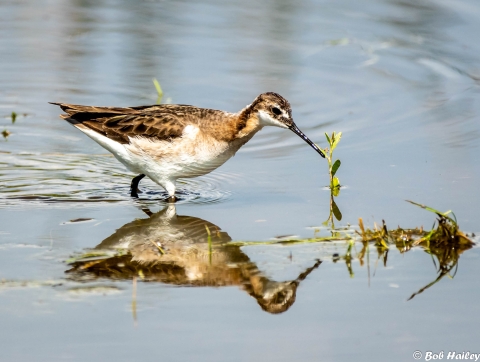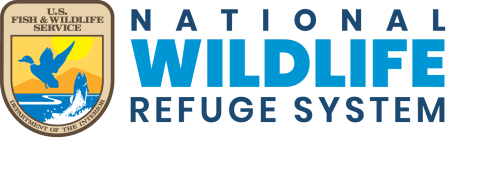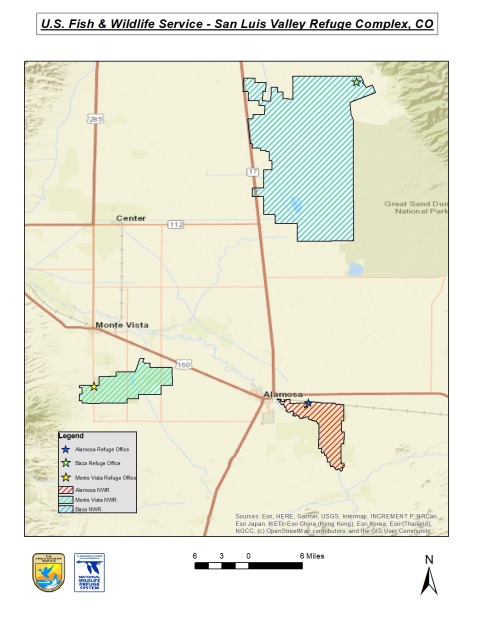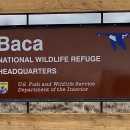About Us
About the Refuge
Monte Vista National Wildlife Refuge is located in the San Luis Valley, a high mountain basin located in south-central Colorado. It’s one of three national wildlife refuges in the Valley that provides crucial feeding, resting, and breeding habitat for over 200 bird species and other wildlife. Alamosa and Monte Vista Refuges are located at the south-central end of the Valley and Baca Refuge is located at the north end.
The Refuge’s wetlands are artificially made and intensively managed to provide habitat for a variety of waterfowl and other water birds. Water from irrigation canals and wells maintain this important wetland habitat. Mallards, pintails, teals, and Canada geese are common, as are American avocets, killdeers, white-faced ibises, egrets, and herons.
Our Mission
Vision Statement
The San Luis Valley National Wildlife Refuge Complex, set in a high expansive desert valley, is cradled between the snowcapped peaks of the San Juan and Sangre de Cristo Ranges. Mountain snowmelt feeds the Rio Grande, numerous streams, and a dynamic ground water system creating a diverse mix of playas, wet meadows, and willow and cottonwood riparian riparian
Definition of riparian habitat or riparian areas.
Learn more about riparian corridors that are in stark contrast with the surrounding arid landscape. As reflected by 12,000 years of human history in the valley, the refuge complex attracts many people. Visitors experience the ancient song of the sandhill crane, witness evening flights of thousands of waterfowl, and listen to bugling elk. Through ever changing conditions like climate change climate change
Climate change includes both global warming driven by human-induced emissions of greenhouse gases and the resulting large-scale shifts in weather patterns. Though there have been previous periods of climatic change, since the mid-20th century humans have had an unprecedented impact on Earth's climate system and caused change on a global scale.
Learn more about climate change , the refuges support and foster a collaborative spirit between their neighbors and partners to conserve the valley’s treasured resources.
Our History
The Monte Vista National Wildlife Refuge was established in 1952 as the first national wildlife refuge national wildlife refuge
A national wildlife refuge is typically a contiguous area of land and water managed by the U.S. Fish and Wildlife Service for the conservation and, where appropriate, restoration of fish, wildlife and plant resources and their habitats for the benefit of present and future generations of Americans.
Learn more about national wildlife refuge in Colorado, although plans to purchase this area were considered as far back as 1941. Although the Refuge was originally going to be named the Spring Creek National Wildlife Refuge, officials felt that Spring Creek was too common a name, so the Refuge was named after the nearby town of Monte Vista. On November 1, 1949, the proposed Refuge was considered and approved by the Colorado Game and Fish Commission. Due to a delay in reaching a price agreement for the purchase of tracts for the proposed Refuge, it was not approved by the Migratory Bird Conservation Commission until June 10, 1952. The funding for three tracts was obligated in fiscal year 1952, with the first one obligated on September 3, 1952. The Bureau of Land Management withdrew 800 acres administered by the agency on September 19, 1960 from all forms of appropriation under public land laws, including mineral laws (Title 30, U.S.C.). In 1962, the Migratory Bird Conservation Commission authorized additional acreage to bring the total to 12,402 acres. Today, the acreage of the Refuge is about 14,834 acres, of which 13,951 acres have been purchased by the Service.
Other Facilities in this Complex
About the Complex
The San Luis Valley National Wildlife Refuge Complex is made up of the Alamosa, Monte Vista, and Baca National Wildlife Refuges and is an area set aside for migratory birds and resident wildlife. These Refuges are a part of the National Wildlife Refuge System, a network of lands set aside and managed by the U.S. Fish and Wildlife Service specifically for wildlife. The Refuge System is a living heritage, conserving wildlife, and habitat for people today and generations to come.
The 12,026 acre Alamosa National Wildlife Refuge includes wetland areas, riparian riparian
Definition of riparian habitat or riparian areas.
Learn more about riparian corridors, wet meadows, and river oxbows. The wetland and river habitats provide a wildlife oasis in this dry region. These habitats support a variety of wildlife, including songbirds, water birds, raptors, deer, beavers, coyotes, and more.
The artificially created wetlands on Monte Vista National Wildlife Refuge’s 14,804 acres are intensively managed to provide habitat for a wide variety of waterfowl and other water birds. Mallards, pintails, teals, and Canada geese are common, as are American avocets, killdeers, white-faced ibises, egrets, and herons. Irrigation canals and wells provide precious water to maintain this important habitat.
The 93,000 acre Baca National Wildlife Refuge is a highly diverse combination of shrublands, grasslands, wet meadows, playa wetlands, and riparian areas. This Refuge was set aside not only as another haven for migratory birds and resident wildlife, but also as an important piece in a broader conservation effort to protect the wildlife, habitat, and water of the north and eastern portions of the San Luis Valley.






